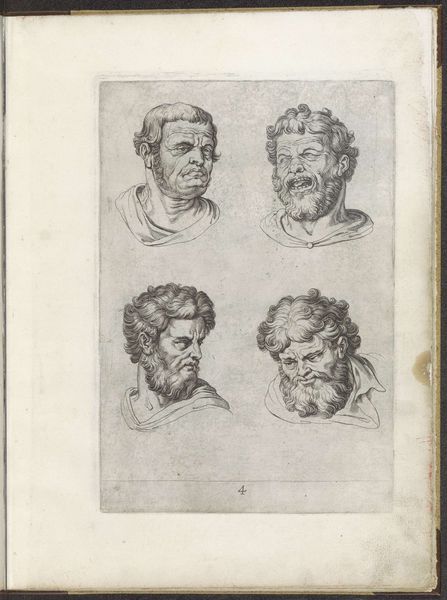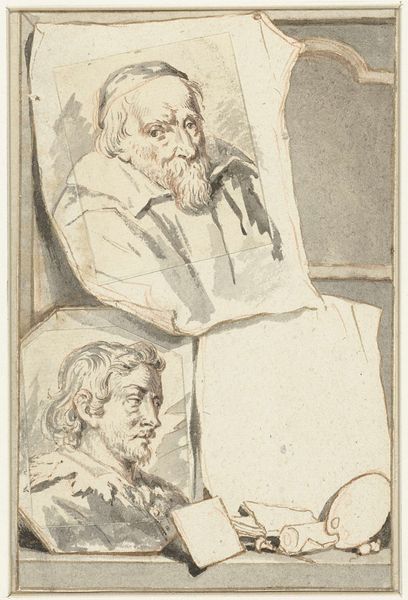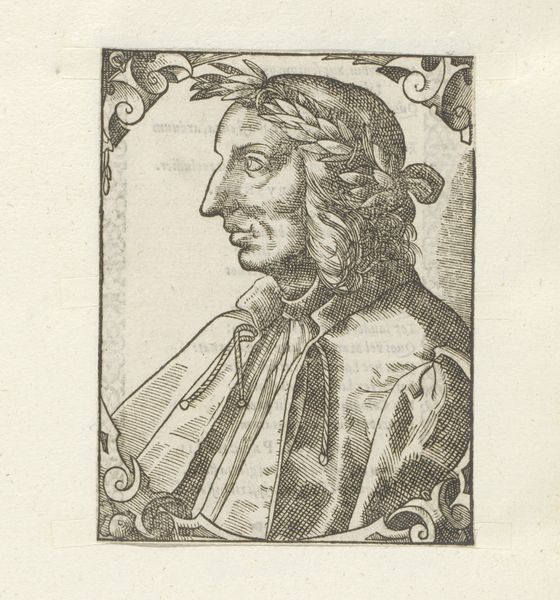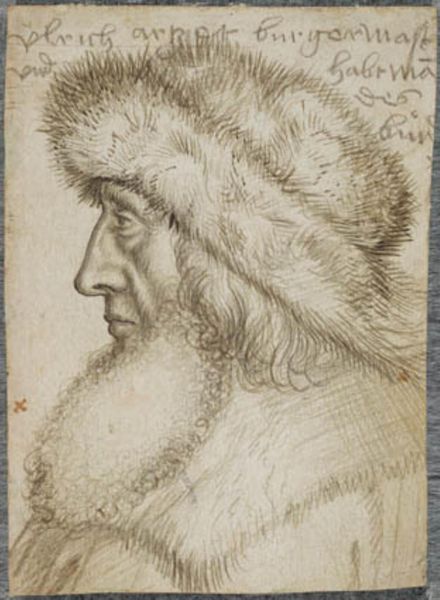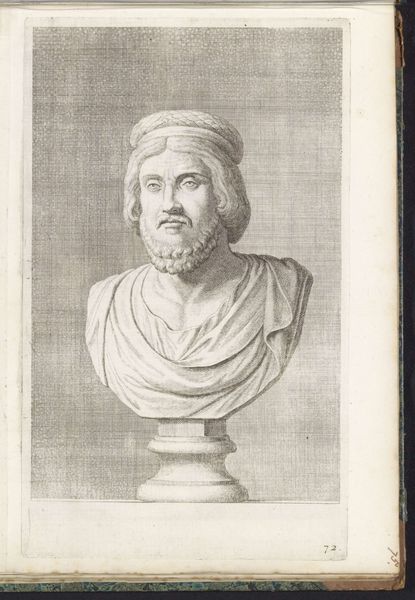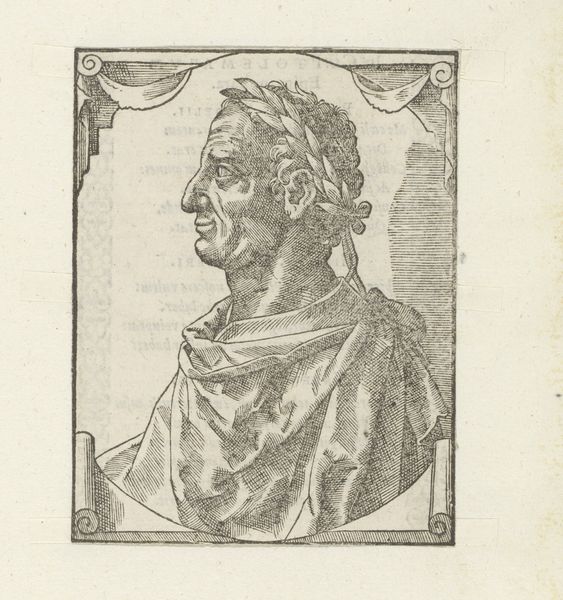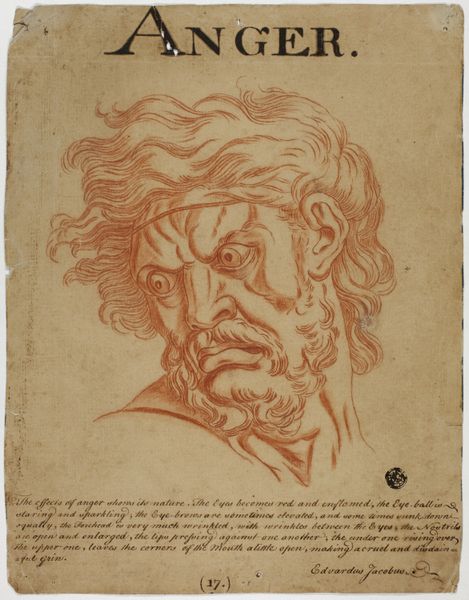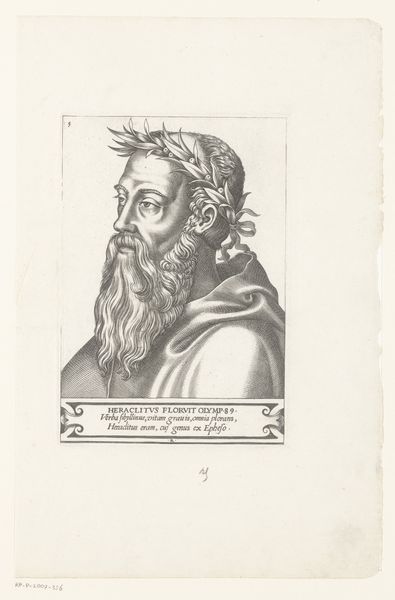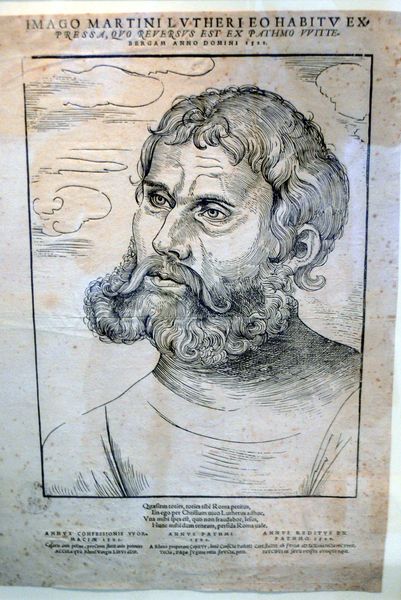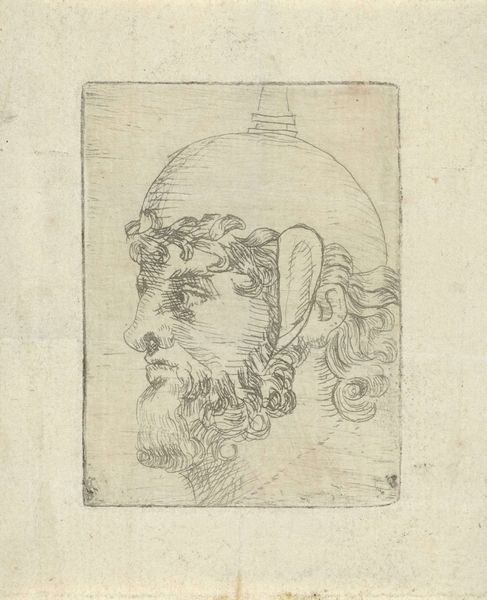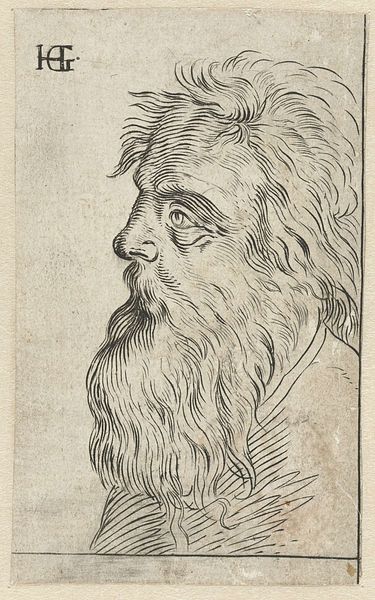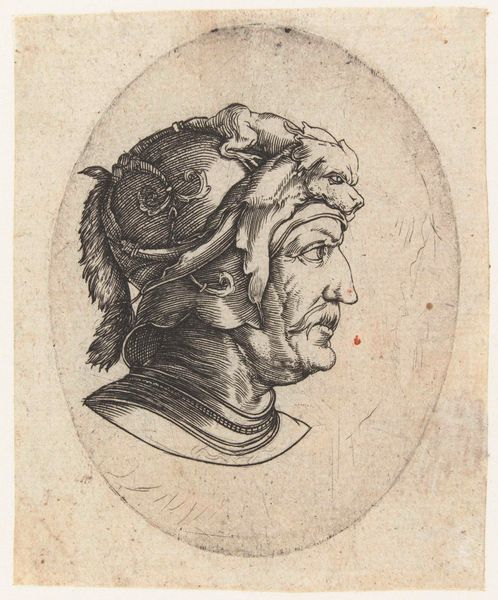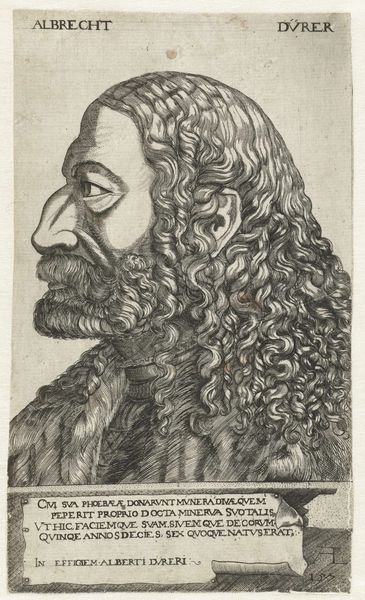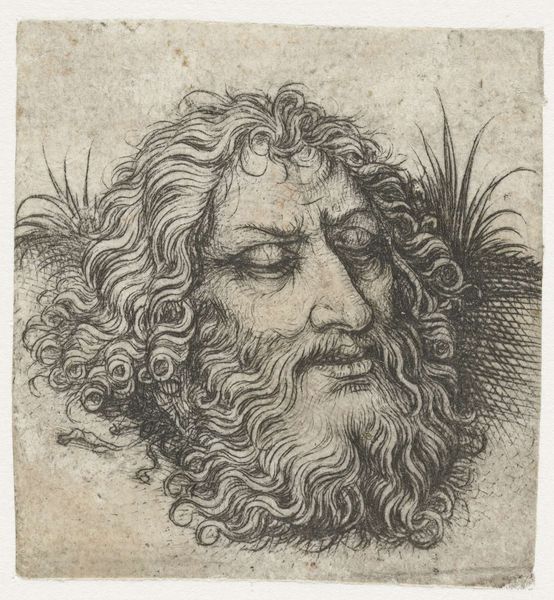
drawing, coloured-pencil
#
portrait
#
drawing
#
coloured-pencil
#
baroque
#
figuration
#
coloured pencil
#
history-painting
Copyright: Rijks Museum: Open Domain
Curator: Here we have Hendrick van Beaumont's "Portraits of Seneca and Ignatius of Loyola," a coloured pencil drawing dating back to 1696. Editor: The contrast immediately strikes me. There’s this dramatic dichotomy in texture and composition. Ignatius is formal, contained within a defined shape. Then there's Seneca: raw, emotive. Curator: That’s a compelling observation. The visual distinction mirrors their differing philosophies and legacies. Ignatius, founder of the Jesuit order, and Seneca, the stoic philosopher, are positioned here in a complex historical and religious dialogue. How do we interpret Beaumont positioning these figures together on the same page? Is he juxtaposing sacred and secular knowledge? Editor: The formal qualities reinforce your reading. Ignatius' portrait, with its halo-like rays and inscribed name, utilizes symmetry, creating an iconic, almost manufactured feel. While Seneca, rendered with these vigorous, almost frenetic lines, is imbued with movement. The artist masterfully conveys their personalities through the contrasting styles of rendering. Curator: Indeed. In its time, the pursuit of knowledge was fraught with religious and political undertones. Stoicism was embraced and re-interpreted across many different social groups. How can we view Beaumont as attempting to place value on reason during periods of religious reformation? Editor: I am captivated by the use of color to define them. There are warmer tones defining Seneca's features, which creates depth, versus Ignatius being largely monochromatic, giving an impression of being flattened. There is the use of line itself: look at the etching around Ignatius that produces a clean line in juxtaposition with Seneca's uncontrolled line work. Curator: I concur that the formal composition choices reflect Beaumont's world. He perhaps prompts us to think about our relationship to these two schools of thought. Editor: It is undeniable how such elemental artistic elements work to portray more abstract notions such as piety, knowledge, or identity. The dialogue between them feels more relevant because of this tension. Curator: Agreed. Looking at "Portraits of Seneca and Ignatius of Loyola," we find a deeper meditation on historical context. It allows us to grapple with its subjects. Editor: Through acute formal analysis, it underscores art's unique capacity to generate significance in historical dialogue.
Comments
No comments
Be the first to comment and join the conversation on the ultimate creative platform.
